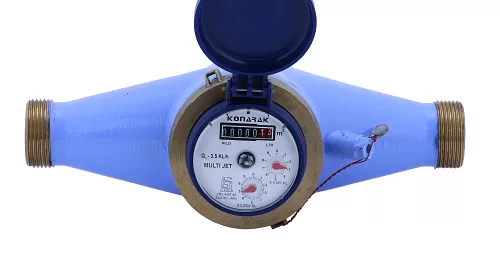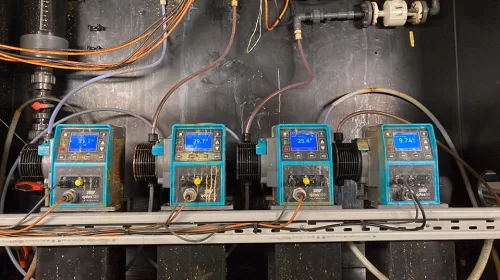By Eric ZIEGLER, Boris CONSTANTIN, Abdelkader BOUBETRA, Anne TIRARD
Abstract:-
Since 2018, BIPEA has organized several proficiency tests for water sampling and insitu analyses.These proficiency tests require a very specificorganization, with especially all the participants being gathered at the same time at a defined place altogether. The proficiency test consists of routine in-situ analysis, such as pH, conductivity or dissolved oxygen, usually in three different locations and awater sampling exercise. According to the location, different type of water can be analysed: river, lake, water from a recreation complex, waste water from purification plant and so on. For the sampling part, all the obtained samples are then sent to the same third-party laboratory for analysis. A statistical treatment is performed with the data, like for everycommon proficiency test, and a report is circulated to all the participants. In addition to the individual assessments, a more generic view of these tests can now be outlined.
Keywords Proficiency test schemes, Water sampling, Water analysis, In-situ analysis.
Introduction:- Taking part in proficiency tests is a very common tool for laboratories to check the quality of their analyses and value their know-how to obtain accreditations. Despite it is sometimes said that the main part of the uncertainty of a result can come from the sampling part, it is actually often more complicated tomonitorthis step. That is why, in 2018, BIPEA launched a new proficiency testing scheme (PTS) for water sampling and insitu analyses to allow the laboratories to test and enhance their abilities for these determinations, especially in the framework of laboratories accreditation according to ISO/IEC 17025 standard. However, only a few such proficiency tests currently exist as they are much more complicated to organize from a logistic point of view. In spite of COVID-19 outbreak, four different rounds have already been held and others are coming. This article describes the organization of such test and the main results obtained from these proficiency tests. Design, Organisation and Methods Locations These tests were built in cooperation with AQUAREF, a French consortium of technical institutes, which serves as national reference laboratory for the monitoring of aquatic environment. AQUAREF first started to select different places over the French territory to conduct these tests. For these tests, it is needed to find, in a reduced area to allow to perform the whole thing in a single day, at least three different locations with different type of water (river, lake, water from a recreation complex, waste water from purification plant, etc) and with an easy access to receive about 15-20 people in good conditions. Participants A maximum of 15 participants is defined for this test. As it is needed to look at what the participants do, as they must have enough space between them to work and as all must be done during a single day, 15 participants is already a good population to deal with. According to the locations, participants can perform altogether or proceed in small groups, one after the others. Participants must come with their own devices and equipment like they would do for a routine mission. Organization It is very important to follow a strict protocol. A sheet with the information about all the locations is provided to the registered participants before the test. Phone numbers of the organization team must be given to the participants and reciprocally the organization team must have a phone number for every participant. The participants are asked to be at the first location at a defined hour, usually rather early in the morning, and inform if ever any issue is faced. Once the determinations performed at the first location, it is explained, in addition to the provided documents, where to go and how. The same thing is done when ready to go from location 2 to location 3. The way to organize lunch time shall be considered and communicate to the participants prior to the test. Despite dealing with such a group is not always that easy, an approximate schedule must be defined and followed as much as possible, especially to avoid to get late, as people need to go back home at the end of the day.
Analyses and Sampling :-The test consists of three distinct phases: Analysis of control solutions. Participants are first asked to perform several determinations on pH and conductivity solutions, to check if there are some deviations with the calibrations of the different devices used by the participants. In-situ analyses. At each of the three locations selected for the test, participants can carry out an on-site measurement of pH, conductivity, dissolved oxygen and turbidity. Several repetitions are requested for each parameter. Sampling. At one of the three locations, it is requested to the participants to take some samples for laboratory analysis. The bottles are already prepared and labelled. Each participant has to fill two sets of bottles which will be analysed in a random order by t a third-party laboratory. Different parameters were tested during the different rounds: physico-chemical parameters, micro pollutants, microbiology. Homogeneity and Stability Homogeneity and stability are a key point for every proficiency test. Concerning these tests, for each site, continuous measurements are performed at the borders of the defined area where participants are invited to perform their determinations, in order to control thevariations during the time of the testto ensure a low impact of these variations on the results of the participants. For stability, in-situ determinations are not concerned and for sampling, all the samples are sent together to a third-party laboratory who analyzes them quickly in a single analytical series, in a random order, for each parameter. This third party-laboratory must be selected carefully during the preparation of the test, agreeing on which bottles to use according to the determination to perform and explaining the importance to follow the requirements of the experimental design in order to be able to exploit the results at best.
Data:- The participants fill their results on a paper form made for the test, one for each series (control solution and each of the location). At the end of each stage, the reply forms are checked and a picture of each of them is taken order to avoid issues with damaged paper or data loss. On the other side, some observers also fill their own forms to get methodological data about the participants, like for example if the probes are properly rinsed between each determination, how are positioned the participant regarding the flow, and so on. These data will later be filled in an IT tool to allow the statistical treatment. Statistical treatments The statistical treatments of the quantitativeresults arecarried out in accordance with ISO 13528 standard.The difficulty that can be faced for such test is the reduced number of results due to the limited number of participants. For the first phase, with the analysis of standard solutions, the assigned values(xpt) are the reference values provided on the certificates. It allows to have an assigned value independent from the results of the participants, their number being consequently not an issue in this case. The assigned values for the two other phases are estimated from the robust mean of all the results, except incoherent values.The data from the first phase can help to exploit the data for the next phases, having some elements to remove some data from the estimations if needed. The standard deviation for proficiency assessment (pt) can also be defined before the test, for example as a percentage of the assigned value. The use of such defined value allows to have an assessment that is independent from the obtained results and consistent through time. This is especially useful when there is a limited number of results, which could lead to have a wide and fluctuant dispersion of the results. The quantitative results (x) are evaluated and classified through z-scores, where z = (x – x_ pt)/_pt : for z £|2|, the result is considered as satisfactory, for |2|< z.
Once validated, the interlaboratory comparison report is circulated to all participants which are identified by an individual code to remain anonymous. Results and Discussion Calibration The calibration of the devices appears to be a key point in the trueness of the measurement. It can be noticed that the bias observed on the standard solution samples for pH and especially conductivity is usually met in a similar way for all the following in-situ determinations. A drift can also sometimes be seen for some participants between the beginning and the end of the day. In-situ determinations According to the topology of the location, different strategy can be applied: wading measurement, measurement from the bank or from water sampled from a bucket. Concerning wading measurement, the most important is not to impact the area by getting in the water before the determination, especially if there is little depth and flow, the basic rule being to measure upstream from where the sampler enter the water. About measurement from the bank, it happened that the cane used appears to be a little short, leading to have a determination on the edge and not in the mainstream, leading to a slightly different result. A bigger impact could be obtained from such situation in some cases. The use of a bucket from a bridge was also already used. The volume being reduced in this case, the determination of dissolved oxygen is especially critical as it can evolve quite quickly. Despite different strategies can be used by the participants of a same group, the participants tend however to influence each other, which limits the variations that would have been obtained if all the determinations were made fully independently. Having the samplers alone, one after the other, could be another option, especially to assess the practice and the selected strategy, but would require an even more complex organization and raises the issue of the stability of the water area through time. Sampling Most of the points listed above are also relevant for the sampling step. Despite it is sometimes noticed that a few practices are not the most appropriate regarding rinsing, filling or position in the flow, no significant difference has ever been met so far from the sampling made by the different participants. Additional benefit It appeared that the participants were glad to discuss with the other samplers about their activity, to compare their equipment and material, and to share their experience. As this activity can actually be often rather solitary, such test is also the occasion for the profession to meet and exchange. Conclusion:- The implementation of such proficiency test requires a well framed organization. It takes time for both the organization team and the participants. Their number consequently remains currently limited. Some interesting lessons can nevertheless be obtained from the way the participants practice and from their results. The dispersion of the results obtained in these controlled (time and space) conditions are overall satisfactory, showing that this pre-laboratory step is now more considered and more professional, and will probably continue to be developed.





